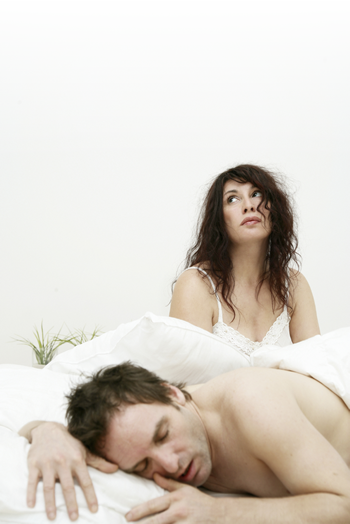Snoring and Children
Child sleep specialists put snoring into two categories: benign snoring and the kind of snoring that indicates obstructive sleep apnea.
Children with obstructive sleep apnea may experience difficulty sleeping at night and behavioral problems during the day. Undiagnosed obstructive sleep apnea can lead to school problems, delayed growth, and even heart failure because of decreases in blood oxygen levels. Both boys and girls can suffer from obstructive sleep apnea, and usually have some of these things in common.
|
|
Some of these symptoms are similar to those described in children with attention deficit hyper-activity disorder (ADHD), such as trouble concentrating, hyperactivity, and nervousness. In fact, some children are misdiagnosed as having ADHD when they are actually suffering from obstructive sleep apnea. If you have noticed that your child has some of the above symptoms, you should talk to your pediatrician about referral to a sleep specialist.
What exactly happens when my child stops breathing?
Your child’s muscles are more relaxed during sleep than they are during waking hours, including the muscles used in breathing. In some children with obstructive sleep apnea, the throat muscles relax too much and interfere with breathing. In other children, the muscles relax normally during sleep but a narrower-than-normal throat passage allows the throat to close. In these cases, when the child tries to breathe, he or she experiences difficulty in drawing air past the obstruction. You will hear deep gasps as your child’s breathing starts, and each gasp may awaken the child momentarily, disrupting the sleep patterns.
Anything that makes the throat more narrow can increase the risk for obstructive sleep apnea. This includes enlarged tonsils and adenoids, or an abnormality in your child’s face or jaw area. Sleep apnea is also common in children with Down’s syndrome and other congenital problems that may affect the nervous system or structure of the face.
Allergies and a "stuffy nose" may cause snoring, but rarely lead to obstructive sleep apnea.
How do I find out for sure if my child has obstructive sleep apnea?
You should visit a sleep specialist who has experience with children to determine if your child has obstructive sleep apnea. The specialist will record your child’s sleep for at least one night in a laboratory with a test called polysomnography (PSG). This is the only way to find out if your child has obstructive sleep apnea or benign snoring.


